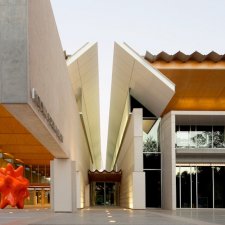- About us
- Support the Gallery
- Venue hire
- Publications
- Research library
- Organisation chart
- Employment
- Contact us
- Make a booking
- Onsite programs
- Online programs
- School visit information
- Learning resources
- Little Darlings
- Professional learning
Alexander Dalrymple (1737-1808), hydrographer and writer, began work with the East India Company in Madras in 1752. Employed to write, he became interested, while abroad, in the potential for trade with China and travelled to investigate possibilities in the region. Working with Torres's account of his South Pacific journey from 1606, in 1767 he published An Account of the Discoveries Made in the South Pacific Ocean, previous to 1764, in which he endorsed the idea of a Great Southern Continent. Elected a Fellow of the Royal Society in London in 1765, he was passed over in favour of James Cook to lead the expedition to observe the transit of Venus (the secret and twin aim of which was the search for the said continent). Dalrymple proceeded to write A Plan for Extending the Commerce of This Kingdom and of the East-India Company, but he was sacked from the Company in 1771. After two more years in Madras in 1775 to 1777, he was appointed hydrographer to the East India Company in 1779. Fixated on trade, he insisted that markets apart from India and China must exist somewhere in the South Pacific; because he viewed it as a threat to these markets, he opposed the establishment of 'the intended thief colony at Botany Bay' in print in 1786. His reputation as a hothead ensured that his arguments were ignored. As hydrographer to the Admiralty from 1795, he proved difficult to work with, and was dismissed in May 1808. He died, purportedly of 'vexation', a few weeks later. Although Dalrymple made valuable contributions to marine cartography, and his ideas on trade indicated his intelligence and ambitious vision, his biographer concludes 'that he should be remembered as one who engaged in constant disputes with the East India Co and the Admiralty, who pursued a foolish and unnecessary vendetta against Cook and who supported erroneous geographical theories is perhaps inevitable'.
Collection: National Portrait Gallery
Purchased with funds provided by the Liangis family 2012
Mrs Sortiria Liangis AM (12 portraits supported)



On one level The Companion talks about the most famous and frontline Australians, but on another it tells us about ourselves.



Visit us, learn with us, support us or work with us! Here’s a range of information about planning your visit, our history and more!



We depend on your support to keep creating our programs, exhibitions, publications and building the amazing portrait collection!